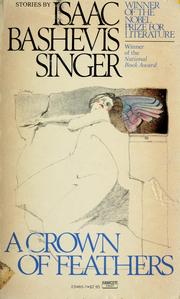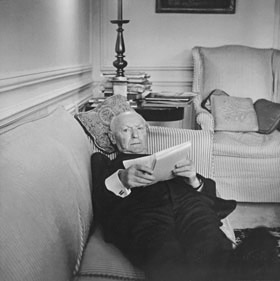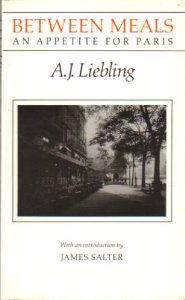The twenty four stories in Isaac Bashevis Singer’s A Crown of Feathers and Other Stories shift across the Jewish Diaspora creating a network of relationships and themes across Poland, New York, and Palestine. His most common characters are scholars frustrated by profound questions or hedonists without an ultimate purpose. The stories set in the United States are mostly shrouded by the legacy of the Holocaust. This was not a strong theme in some of his earlier stories that I looked at months ago in this blog. It seems that the Holocaust became a greater part of Singer’s consciousness over time. In the same way, the Diaspora becomes more significant. His first stories were all set in Poland and emerged from Jewish folklore. These carry on elements of that folklore tradition but thrust them onto a global stage. One thing that seems to run throughout his work without too much alternation is the feeling that characters have lost control of their lives, whether due to malevolent beings, malevolent historical burden, or others powers (institutions, family, and ideas). As with A Friend of Kafka, the characters in A Crown of Feathers are unable to find freedom under the heavy weight of the historical burden they carry. Even in the mundane and slightly beneficial this is true. “The man in the white uniform must have been the owner, or the manager, and the cashier didn’t want him to see that he was a customer get by without paying. The powers were conspiring to provide me with one stroke of luck after another. I went out, and through the glass door I saw the cashier and the man in the white uniform laughing. They were laughing at me, the greenhorn, with my Yiddish.” (304)
One thing we can consistently take away from Singer’s work is that freedom is difficult and the institutions that surround us shape so much of the details of our lives that escape is often unthinkable. The solution is either resistance, flight, or acceptance. However, none of these really work out. Flight most of all, because if the demons from Poland can come to haunt Jewish immigrants in New York (or more to the point the brutal legacy of the Holocaust). I am often reminded of Melville’s thesis in Omoo when I ponder desertion, flight and migration in respect to freedom. In his maritime fiction, Melville’s characters were often seeking something better elsewhere but always feel short, necessitating a permanent state of wandering. This may be seen most strongly in Mardi, where the wandering is truly endless. Singer’s scale is less grand and his characters less able to move. Whether due to family, tradition, language, or age, their mobility cannot take them much farther than New York (or more rarely Miami). These migrants had one chance to leave the burdens of their homeland and they failed.
A Crown of Feathers also discusses the legacy of Jewish radicalism in the later twentieth century. Movement anarchists do not often come up in American literature despite the fact that vernacular anarchists are almost always there (a point I am trying to make in this blog). Singer’s Jewish intellectuals in Poland or New York often had ties to anarchists movements, but he describes these people as used up radicals, sometimes akin to the dried up and useless hedonists he also likes to describe. This point is strongest in the story “Property,” which is a deeply nostalgic look at these radicals. “Our Socialists have completely cooled off. They use the old phrases, but the spirit isn’t there. As for our Communists, they read the Red Sheet every morning, and repeat it like gospel… If their paper came out saying that Stalin was an enemy of the people and a mad dog, they would repeat it too.” (338) The anarchists were in decline even though Singer asserts that they were the ones with individuality (“even the ignorant ones had a kind of independence.”) Most of the story is a conversation with a movement anarchist Max Peshkin, who like the narrator, has moved to New York from Poland. However, his old radicalism exists only in memory, like the pictures of radical thinkers hanging on the apartment walls of washed up movement activists. Peshkin’s story moves from discussing the state of the movement to giving a rather gratuitous account of one of his affairs. The affair becomes metaphoric for the movement. “Strange, I remember in all its details how our affair began, but I have forgotten how it collapsed.” (346) If you read any histories of radical movements and revolutions you will know that this is commonly true. (This is actually a good thing, since it means that movements and currents never fully die. Their body is never found.)
A second story on the theme of radicalism in Jewish life takes a look from the completely opposite perspective. “Grandfather and Grandson” is about a young man who rejects his grandfather’s strong Jewish identity through the emergence of his anti-capitalist beliefs. Instead of “Property,” which looked at a dying radical spirit this story considers it at its birth. As an idealistic and rather uninformed socialist, the youth thinks that all exploitation is rooted in capitalism. His grandfather tries to correct him by looking (like Singer does in these stories) at the numerous powers working to take away our freedom. The son thinks that capitalism is the only cause of Antisemitism. But his grandfather reminds him that “whoever rules will persecute Jews.” (552) I suppose both views are narrow and can be broken down without too much trouble, but we do find in this generational tale how the immigrants were ultimately able to break free of one form of ideological confinement (only to enter another one).
Singer wrote these tales at a time when cultural malaise was strong across America, affecting not only Jewish immigrants burdened by the legacy of the Holocaust. The paralysis evident in these tales is as horrifying as any of the demons that Singer’s characters encounter.
Here is Studs Terkel’s interview with Singer.













